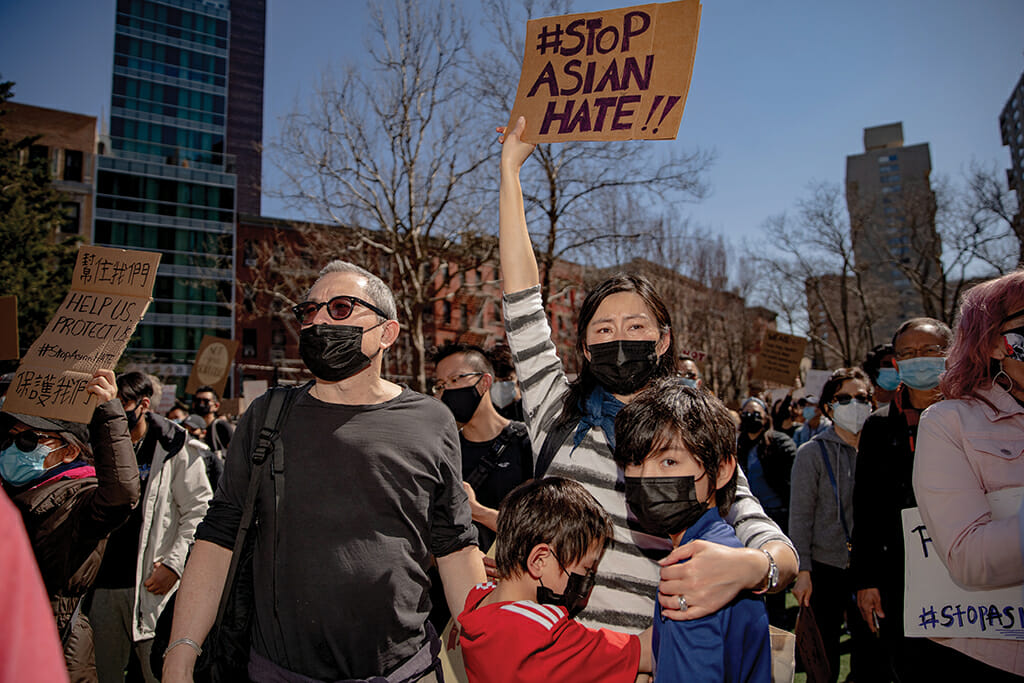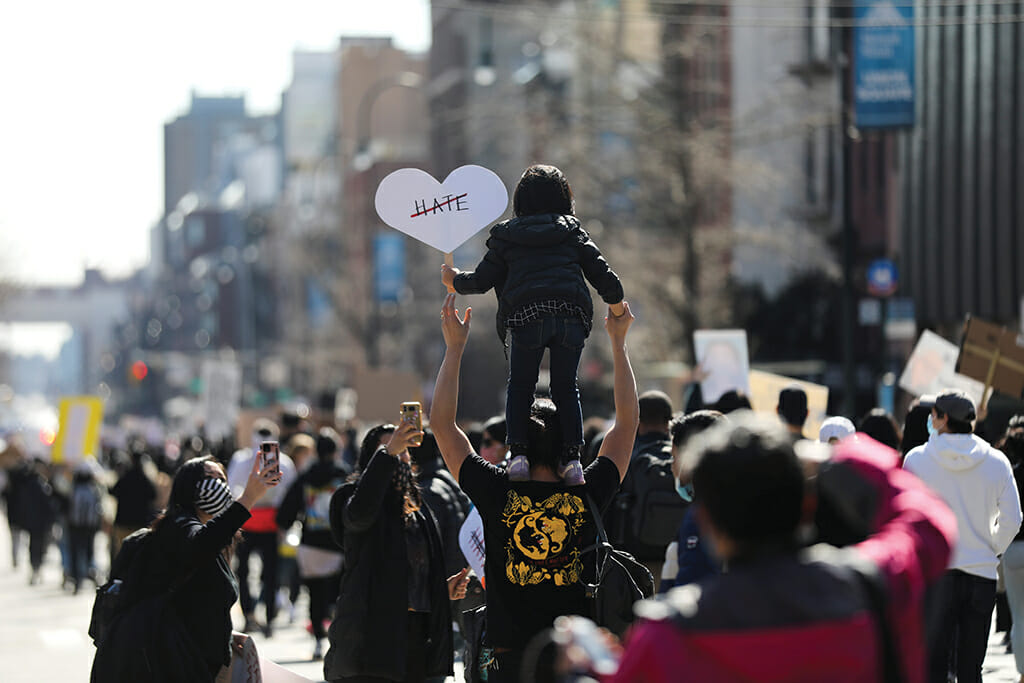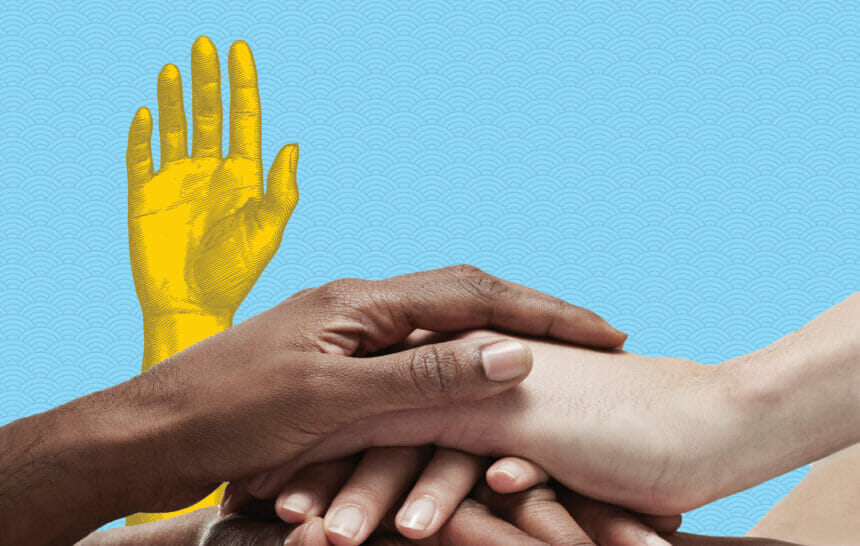For many Asian Americans living in the U.S., the COVID-19 pandemic was doubly burdensome. Not only did they need to keep themselves and their families safe from the virus, they often found themselves scapegoated for the unfolding crisis. Hate attacks spiked.
It hit close to home for Dr. Julia Kim, VP of business development (pharma) at TelevisaUnivision. “Walking on the streets of New York, there have been several incidents where I’ve been screamed at, called racial slurs and had lit cigarettes thrown at me,” she recalls. “A couple of my friends experienced similar attacks: They’ve had trash thrown at them and been told to go back to China. And we’re not even Chinese.”
Even as the pandemic fades in the rearview mirror, the attacks haven’t slowed. According to the Stop AAPI Hate report issued in May, there have been more than 11,000 acts of hate against the Asian American Pacific Islander (AAPI) community since 2020.
The uptick in anti-Asian attacks obscured another problem: Namely, that members of the AAPI community were experiencing poorer health outcomes, even at a time when health organizations had finally started prioritizing the needs of other marginalized populations.
“Not only were we specifically impacted by the COVID-19 virus, we were blamed for it,” says Ogilvy Health SVP Abigail Carag Fredenburg. “There was violence, which is a major health issue for the community, and that has continued.”
Spurred by the pandemic and the killing of George Floyd, the healthcare world continues to emphasize DE&I initiatives. Corporate healthcare entities in particular have issued countless statements in which they pledged to address health disparities and make their marketing efforts more authentic and inclusive.
But members of the AAPI community report that they continue to feel unseen and unheard — and largely ignored by industry-wide efforts. They tell MM+M that they have rarely seen the diverse AAPI community reflected authentically in marketing campaigns. They also express disappointment about the lack of AAPI representation in leadership roles.
Some of this has to do with the industry’s DE&I pledges falling short as a whole. Even the most ardent optimists acknowledge a still-wide gap between intentions and actions.

“The leadership and corporate communications teams of several pharmaceutical companies have publicly stated that they are committed to advancing health equity,” Kim notes. “Yet when it comes to speaking to an underserved patient population — e.g., Hispanics — marketing executives are unable or unwilling to invest in Spanish-language campaigns.
“Are they really making a difference at the grassroots level? They’re not,” Kim continues. “And as it pertains to Asian Americans, especially since the pandemic, we feel the brunt of being marginalized, under-represented and discriminated against.”
Bryan Ong, a senior UX/UI designer at ConcentricLife, notes these distinctions are often most obvious in the creative work itself.
“It’s hard for me to think of a campaign that thoughtfully reached the AAPI community because the campaigns that do pop into my head have always felt generic and not intentional,” Ong explains. “They’re more like, ‘Oh, here’s an ad that we did for the general market. We need to swap out the photo. Go on Getty and grab a photo [of an Asian American person].’ That’s how it has always felt.”
It doesn’t help that healthcare marketers tend to treat the AAPI community as a monolith. The diaspora is vast and varied, consisting of many different ethnicities, backgrounds, languages and religions. Asia is, after all, the largest continent on the planet. To that point, the verbiage is changing, with “Asian American” on the way to being replaced by AAPI (and sometimes APIDA to include South Asians or NHOPI for Native Hawaiian and Other Pacific Islanders).
“Being able to represent a population sufficiently means understanding that population sufficiently,” Fredenburg explains. “Someone from mainland China is going to have different healthcare needs than someone from Taiwan, or someone from the Philippines, or Guam in Southeast Asia. The imagery you see tends to be of East Asians and not of other subset groups within the AAPI community.”
Other considerations abound. Healthcare marketers remain in the early stages of learning how AAPI individuals consume and access health information, as well as about the cultural differences that exist between healthcare in their home countries and in the U.S. Similarly, earlier-generation members of AAPI populations have different health needs than later-generation ones.
“It’s complex,” Fredenburg acknowledges. “And all of that has to be considered to understand whom you’re talking to in order to move forward, not to mention to get people to take action with their health and wellness.”
A recent Kaiser Family Foundation report noted Asians are also the fastest-growing racial or ethnic group in the U.S. It also examined 2021 American Community Survey data to assess the state of healthcare among AAPI subpopulations. Examining these experiences “is important since broad data for Asian people often mask underlying disparities among subgroups of the population and disaggregated data are often not available or reported for NHOPI people,” the authors wrote.
Fredenburg points to an unfortunate stereotype suggesting that the AAPI community is the “model minority,” with overall higher incomes and fewer health disparities. This, of course, is patently inaccurate: The KFF report identified wide variations in social determinants of health — such as education and household income — among different AAPI and NHOPI subgroups in the U.S. For example, 66% of non-elderly Mongolian people had at least one household member working full-time, compared to 91% of non-elderly Indian people.

Other subset variations: 55% of Mongolian people were considered low-income, compared to 33% of Cambodian people, 39% of Samoan people, 24% of Chinese people and 12% of Indian people.
“You have a huge proportion of Asian immigrants who are not in the high-income bracket who are struggling,” Kim says. “So from a language and a health literacy standpoint, they’re behind as well.”
AAPI people are also less likely to pursue mental-health care compared to other racial or ethnic groups. KFF found that only 25% of Asian adults say they have received mental health services, compared to 52% of white adults.
Ong has personally experienced this lack of understanding in marketing efforts targeting him — and even from healthcare providers while seeking care himself. When he sought out a nutritionist/dietician, he found it difficult to find someone familiar with the particularities of an Asian diet.
“These disparities come from not having enough people understand the nuances of each particular group,” Ong says. “I find it interesting that advertising — which is in the age of target marketing, where we can get so granular in terms of who sees what — still doesn’t get it. We’re still serving up generic ads.”
This can be blamed in large part on a lack of representation in the healthcare and pharma leadership ranks. Ong notes that he sees plenty of Asian Americans doing creative work at agencies but few in upper-management roles.
That sentiment is backed up by 2018 data published in the Harvard Business Review, which found that AAPI professionals were the least likely racial group to be promoted into management from individual contributor positions. White professionals were twice as likely to be promoted into leadership roles compared to AAPI professionals.
“I wish there were more strategy folks who were Asian American,” Ong adds. “We need more Asian Americans in every step of the process.”
To address these problems, Kim believes the industry needs to start at the grassroots level. In her mind, that means appealing to college students or even high schoolers who may not be aware of the myriad career paths that exist in healthcare marketing.
As for the work itself, Ong says the first step should be an obvious one: “You’ve got to talk to us. Literally. You need to talk to us before you do the work.”
Marketers must also address some of the glaring trust deficiencies. “A lot of Asian Americans — maybe my parents’ generation in particular — have trust issues with hospital systems, pharma companies and even advertising, because they see advertising as a way to sell stuff,” Ong explains. “If our industry can focus on rebuilding that trust with the AAPI community, a lot can begin to fall into place. It all starts with communication.”
“Just like any other individual walking on this earth, we want to be seen,” Fredenburg adds. “Right now, we’re still getting started. As we learn and focus more on this population for the campaigns that we’re building, we’ll move toward that granularity.”
From the August 01, 2023 Issue of MM+M - Medical Marketing and Media







